India dreamt of being an undisputed successor to the pre-partition Imperial India. It harboured the ambition of emerging not only a South Asian hegemon but also a world power. However, its ambition suffered many setbacks. A review of the vicissitudes of India’s “greatness” ambition in the historic context is useful.
Ayesha Jalal in a paper Why Jinnah Matters in Pakistan: Beyond the Crisis State recalls: “Just before his own death, Jinnah proposed a joint defence with India as the Cold War started to shape the world and the two power blocs began to form. Jinnah was still thinking as a South Asian nationalist…had Jinnah’s vision prevailed and found an echo in India, we would have seen a very different South Asia…there would have been no crippling defence expenditures.”
“There would have been no reason to join one or other camps of the Cold War. There would have been open borders, free trade and regular visiting between the two countries…a more humane sub-continent might have emerged.”
India’s cold shoulder compelled Pakistan to challenge her self-conceited “primacy” at every footstep. Accession of some princely states either to India or to Pakistan became a bone of contention between the two next-door neighbours, always at daggers drawn. Jammu and Kashmir was, particularly, a hard nut to crack.
Pakistan posed a formidable adversary to India’s hegemony at every international forum. To pacify Pakistan, India’s then home minister, Vallabhai Patel offered Kashmir literally on a platter to Pakistan in exchange for Junagadh. But, Liaquat Khan, then Pakistan’s prime minister, spurned the offer. He mused `what shall I make of the Kashmir mountains’.
Faced with the raiders in Kashmir, Pandit Jawahar Lal Nehru approached the United Nations for “mediating”, not for “declaring Pakistan an aggressor”. The stark, nay brutal reality then was that India realised that at the UN not only the permanent but also the temporary members supported Pakistan’s position. India did not approach even the International Court of Justice as it perceived it had a weak case.
India remained nominally non-aligned while Pakistan joined security alliances with the USA. Military and quasi-military confrontations took place between the two neighbours. But the Kashmir dispute remained unresolved. Even today, Kashmir is a nuclear tinderbox.
India’s great-power dream will remain unrealized unless it mends its fence with Pakistan. Sandwiched between China and Pakistan, India is unlikely to win a two front war. Quad is unlikely to be of much help as American mothers are no longer fond of contributing more aluminium caskets to the USA’s future wars.
India’s disastrous defeat in the 1962 Sino-Indian War buried India’s dream of world leadership. India was able to dismember Pakistan’s eastern wing in 1971. Yet, her dream of becoming a world power or even a South Asian hegemon remained unfulfilled. Political instability coupled with erratic economic policies whittled down Pakistan’s clout in the comity of nations. In contrast, India, post-1991, adopted such economic policies that rejuvenated its tottering economy. Still, India could not get recognised as a paramount power in South Asia as the Imperial successor to the British raj.
While Pakistan remained defiant, India managed to coerce Nepal, Bhutan and Sikkim to sign treaties in 1949 and 1950 that made “New Delhi in charge of their foreign policy” (Manjeet S. Pardesi, Is india a South Asian or Asian Power; Knut A. Jacobsen, Routledge Handbook of India, page 136). Sikkim was absorbed into the Indian Union in 1975. About Bhutan, there are strong voices in India demanding India should annex it before China does. To tame Nepal, a landlocked country, India blockaded it and annexed its Kalapani territory. But, Nepal is steadfastly resisting India’s pressure.
Diplomacy is like the acrobatics of balancing on a tightrope. Though the USA opposed it, India recognised de jure the People’s Republic of China. The USA, under Harry S. Truman (1956), began to suspect India was a Communist-China sympathiser.
Throughout the 1950s, India supported China’s inclusion in the UN Security Council. Besides, it introduced Communist China to the Afro-Asian countries at Bandung in 1955.
India even legitimized China’s invasion and annexation of Tibet by signing the 1954 panchsheel agreement. India under Nehru also acted as a diplomatic interlocutor between China and Tibet after India had granted refuge to the Dalai Lama.
India continued making goodwill gestures to both China and the USSR. But, both countries construed Indian policies as a conundrum. To their chagrin, India supported the US-sponsored resolution on Korea. This gesture annoyed both the USSR and China. They became skeptical of India’s non-alignment credentials.
China suspected India was bent upon reverting Tibet to its pre-1951 status as a buffer state between India and China. India’s disastrous defeat in 1962 Sino-Indian War buried India’s ambition to emerge as a major Asian power for the remainder of the Cold-War period.
India hails the Galwan (Ladakh) unarmed clashes as a “victory”. But, in actual fact, the clashes were a storm in a teacup. India’s stand in the media contradicted its official stand. India admits China “did not annex an inch of Indian territory” (so said Indian prime minister Narendra Modi at the all-party political moot).
The 1962 Sino-Indian War and the Galwan clashes portrayed India as a power that could not stand China without external military support. India was forced to revert conceptually to the Subcontinent as her primary area of concern. Despite Pakistan’s vivisection in 1971, India remained a regional power.
Pakistan facilitated the USA’s tacit alliance with China. It achieved nuclear parity with India. It prevented India from emerging even as an undisputed regional bully.
In 1972, the then Shah of Iran declared “any attack on Pakistan would be tantamount to an attack on Iran and Teheran is committed to the territorial integrity of Pakistan”.
In the aftermath of India’s “victory over Pakistan”, India embarked upon the Indira Doctrine, is akin to the USA’s Monroe Doctrine. It postulated “South Asia was India’s sphere of influence and India would not tolerate the intervention of any extra-regional power here unless it was on India’s terms. At the same time, India would not intervene in the domestic affairs of the regional states unless requested to do so”.
Within the framework of this doctrine, India intervened in the Sri Lankan Civil War (1983-1990), forestalled a coup in Maldives (1988) and blockaded Nepal during 1989-90 to force it to toe India’s diktat in economic and diplomatic relations.
Subdued by several events, India appears to have now abandoned world-power ambition. It is concentrating on consolidating its position as a major Asian power. Under Manmohan Singh, India undertook structural economic reforms that banked on Japan, the World Bank, the International Monetary Fund and the Asian Development Bank.
India strengthened its naval command in Andaman and Nicobar Islands and began conducting joint naval exercises with Indonesia, Malaysia and Singapore (Lion King annual bilateral submarine warfare exercise). India trained Malaysian pilots to fly MiG-29 aircraft and upgraded defence cooperation with Vietnam.
India sees itself as “indispensable to the strategic balance of power in Asia”. It abhors China’s dominance in the region.
A series of jolts reduced India’s world-power inspiration to major Asian-power ambition. Nehru declared, ` India was bound to play the role of “leading and interpreting Asia and specifically South East Asia to the wider world’ Manmohan Singh, the architect of India’s Look East policy, stressed, ‘India’s Look East Policy was not merely an external economic policy, it was also a strategic shift in India’s vision of the world and India’s place in evolving global economy’.
India’s great-power dream will remain unrealized unless it mends its fence with Pakistan. Sandwiched between China and Pakistan, India is unlikely to win a two front war.
Quad is unlikely to be of much help as American mothers are no longer fond of contributing more aluminium caskets to the USA’s future wars.



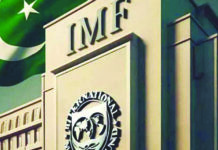

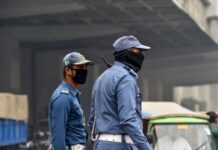



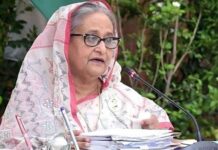
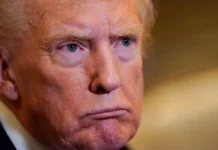








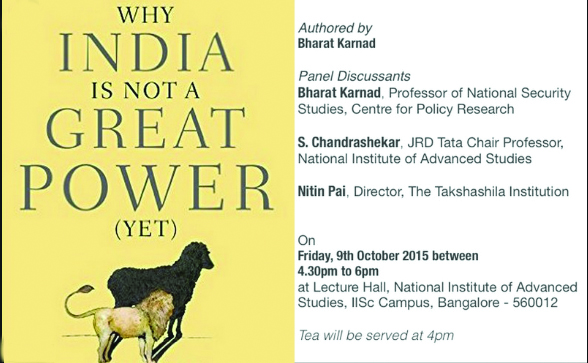




Why India isn’t a world power AND PAKISTAN IS A BEGGAR? WHY, WHY PAKIS REMAIN BEGGARS FOR DECADES? CENTURIES?